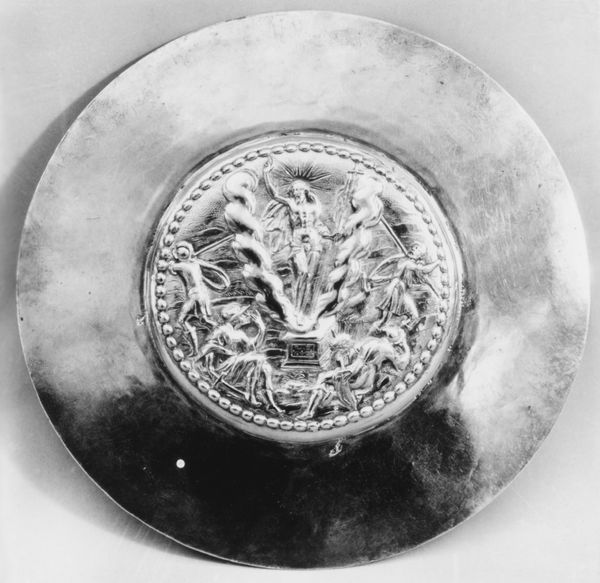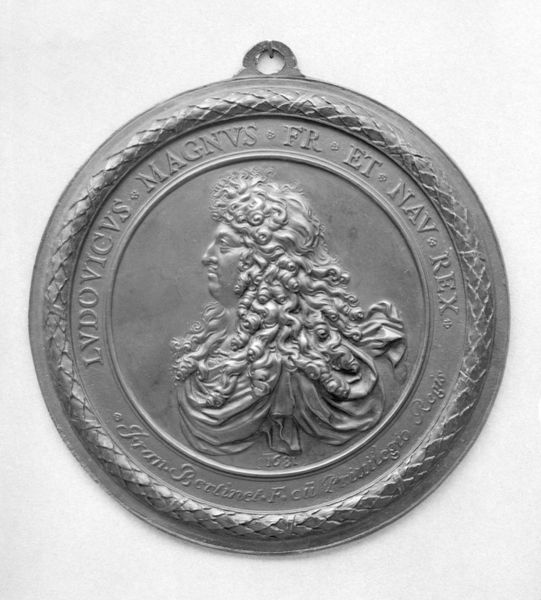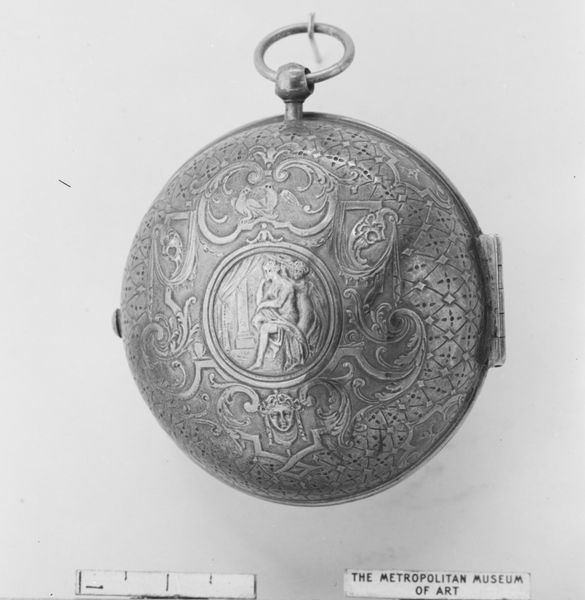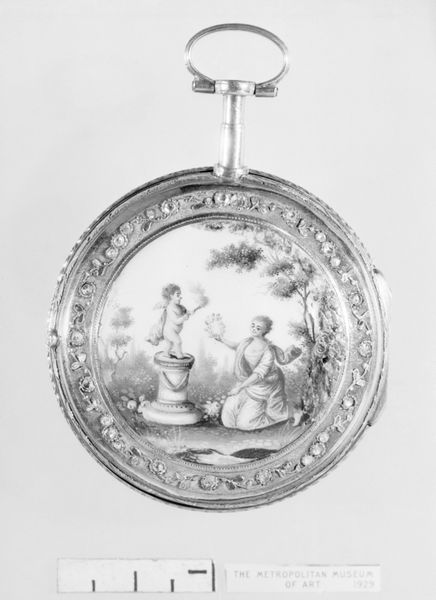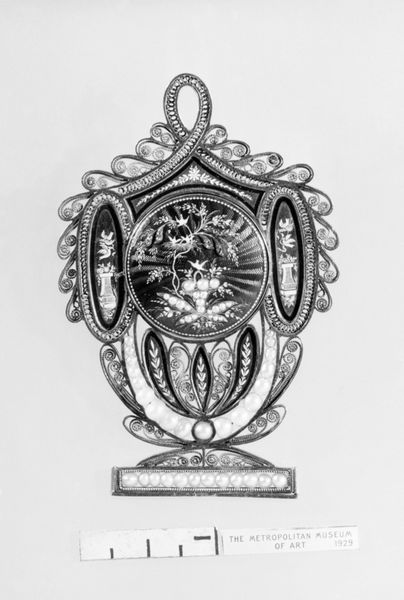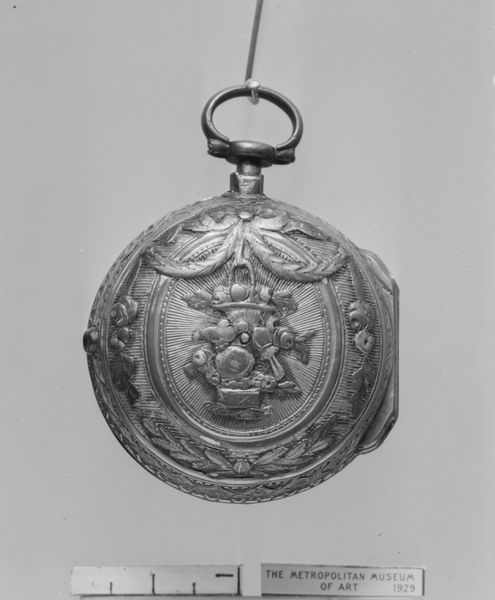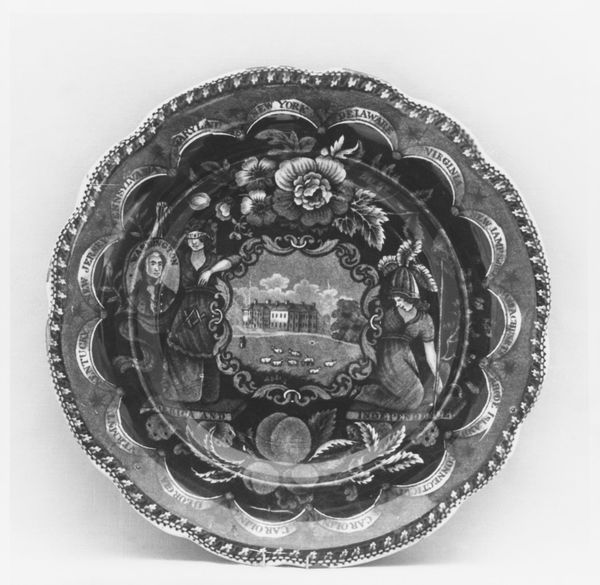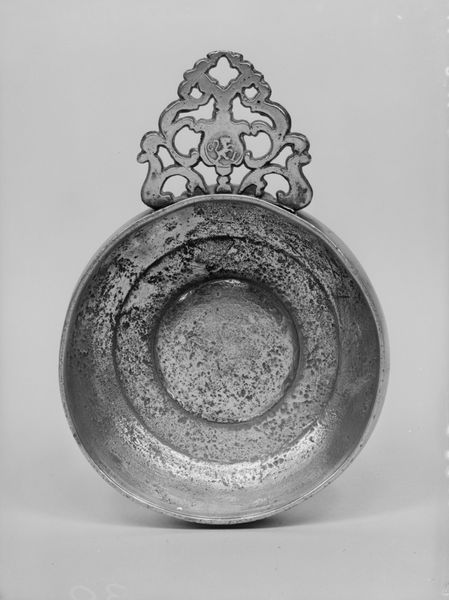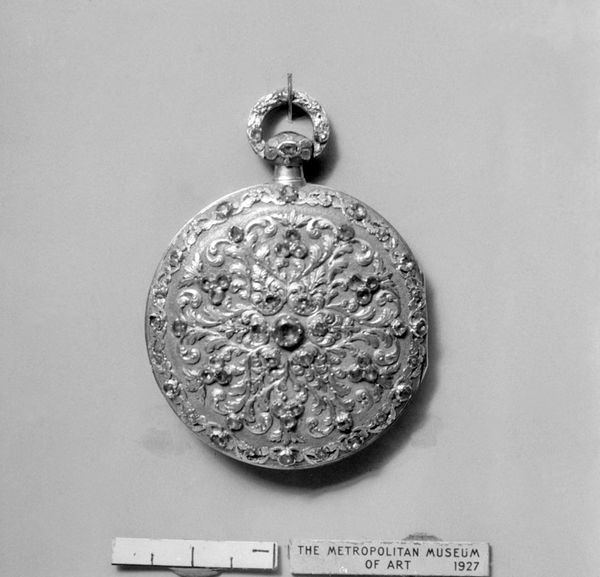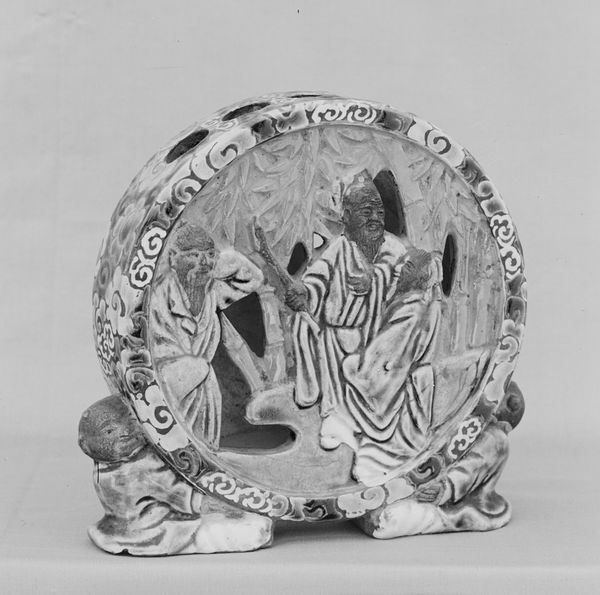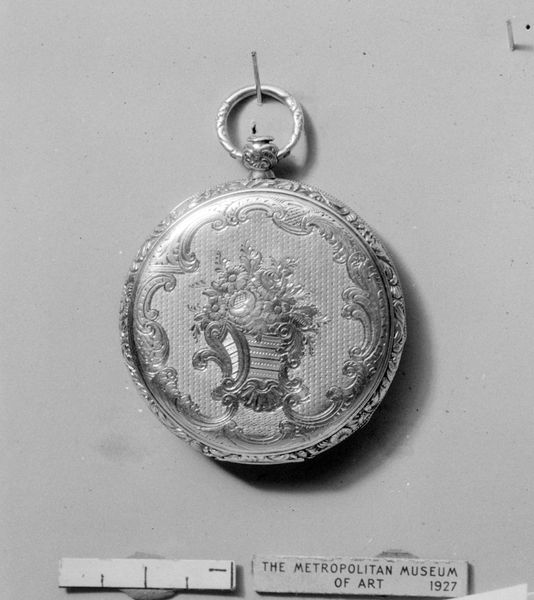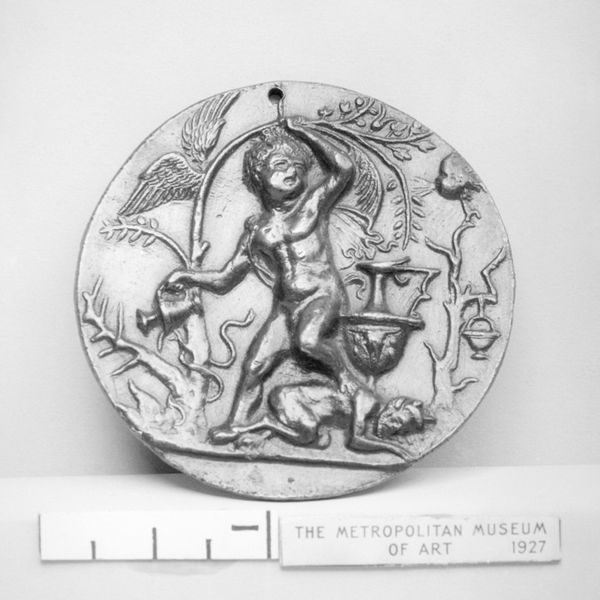
carving, relief, sculpture
#
medieval
#
carving
#
sculpture
#
relief
#
sculpture
#
decorative-art
#
italian-renaissance
Dimensions: Diameter: 27 in. (68.6 cm)
Copyright: Public Domain
Curator: This is an Armorial Tondo from the 15th or 16th century, now residing here at the Metropolitan Museum of Art. The style is attributed to the della Robbia workshop, a family of Italian Renaissance sculptors known for their terracotta reliefs. Editor: It has an arresting sense of density and containment, almost claustrophobic with the wreath of fruits and foliage surrounding the central heraldic shield. There's a real tension between the natural abundance and the rigid symbolism. Curator: Absolutely. The tondo form itself is interesting. It's a circular format, which can imply wholeness and continuity, ideas in line with the values placed on ancestry and legacy found in heraldry. It makes me consider the public role of the powerful families that these tondos represented. Editor: That crest certainly has weight, but in another way. A rampant bull is the primary charge. The bull is quite fascinating when you see it charging so intensely. How did these animal symbols become synonymous with dynastic aspirations? It is interesting how psychological qualities can get ascribed to collective groups, as well as to the individual! Curator: Well, animals were, and still are, rich with cultural associations, serving as visual mnemonics. Medieval and Renaissance society was steeped in symbolic language, and these images were ways of broadcasting family values or attributes like strength, courage, and fertility through carefully coded systems of display. Editor: So this isn't just art; it's a form of brand-building from the past! Who knew fifteenth century families cared this much about crafting and polishing a visual identity? Did the della Robbia workshop have standard templates for this, or was each crest commissioned? Curator: There may have been standard elements, but certainly also personalized touches. Heraldry, after all, was also about differentiation within the aristocracy. So, they are expressions of power but also designed to visually claim a distinct position in society. It raises the question of how effectively symbols of nobility and lineage persist within the sphere of decorative art. Editor: Food for thought! Looking closely at the fruits adorning the outside, I’m struck at how each one looks plump with life. If coats of arms declare lineage, perhaps the fruits are suggestive of an ancestral and familial cornucopia? Curator: A lovely thought! The abundance does seem like an invitation, a pronouncement that this bloodline is a rich one, not just in wealth but in potential and continuity. It certainly makes this Armorial Tondo a vibrant declaration of self.
Comments
No comments
Be the first to comment and join the conversation on the ultimate creative platform.
